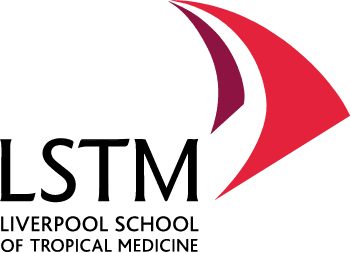- Join the Innovation Journey
- Our Platforms
Hygiene Analysis
This service will assist in understanding the cleanliness of your premises or equipment. This is done by swabbing a particular area, and detecting for bacteria. This service is available to any business type. See examples below:
Examples of who can benefit?
- A business offering a service best delivered in a clean environment e.g. veterinary clinic, beauty salon, sports gym, dentist
- A business producing a product that needs clean processing e.g. brewery, food manufacture.
- A business that wishes to check contamination under normal use conditions e.g. touchpads, taxi service.
How it works?
iiCON will send you 10 swabs to test areas of interest before and after a normal cleaning regime (high traffic/footfall routes or high contract surfaces prone to contamination). After taking the swabs, place the samples in the pre-paid envelope provided to you as part of this support. Post the sample back to us in the pre-paid envelope and we will provide a report of your results.
To download the T&C’s, please click here
Microbiological Screening
Do you know how your antimicrobial product works, how well it works, if it works against biofilms, and if your product leads to the development of resistance?
We can assess the antimicrobial activity of your products against a range of relevant sensitive and resistant bacteria grown on agar plates, in liquid media, or as biofilms on relevant surfaces. Additionally we can determine the likely mode of action of your antimicrobial and the likelihood of resistance emergence, a crucial aspect that antimicrobial product developers can determine to both protect their investment, and position their products within a market space where this aspect is often overlooked.
Examples of who can benefit?
- Businesses developing antimicrobial and antibiofilm products
- Businesses with existing antimicrobial and antibiofilm products on the market
How it works
iiCON can carry out microbiological analysis to determine the activity of an antimicrobial, antimicrobial coatings and surfaces or other antimicrobial products. This is supported by molecular genetics to identify genes which may confer resistance and biochemical analysis to determine mechanisms of antimicrobial activity.
Diagnostic Evaluation
iiCON have the expertise in the development and evaluation of a range of diagnostic platforms from lateral flow through to molecular assays and in all stages of the development (early protype to commercialised products)
Examples of who can benefit?
- Businesses developing new diagnostic products for market
-
Business with marketed products who want to offer them to a wider market
-
Business who are interested in using diagnostic technology to advance their own research, but are unsure how
How it works
This service can offer expert advice or technical assistance to determine:
- Test performance – accuracy (sensitivity/specificity) and reliability (stability/reproducibility)
-
Proof of principle data for your company
- Troubleshooting
- Producing data for regulatory submissions
- Support the development or adoption of methodologies
- Introduce diagnostic technology in a different way to your business
Surfaces and Materials
Environmental interventions and novel materials are important in the control and spread of infection. This service can assess the performance of your novel surfaces or materials for a wide range of applications.
Examples of who can benefit?
- Businesses developing new actives, surfaces or materials with antimicrobial or infection control properties
- Businesses with existing marketed products
- Businesses who develop functional surfaces, coatings, sprays and materials for wide applicability.
How it works
This service can offer expert advice or technical assistance to determine:
- Chemical Analysis: We can understand how your product or formulation behaves at a surface.
- Topography Analysis: Understanding the characteristics, morphology and topography of the surface.
- Antimicrobial surface analysis: We can assess the performance of your product against a range of microorganisms under controlled laboratory conditions.
- Surface Visualisation: We can use high performance microscopes to visualise what is happening on the surface
Unsure which service will benefit you most?
Are you currently unsure which service might be most beneficial to your company?
Does your request does not quite fit within the existing focus areas, but you think we could help?
Please select this option and we will get in touch to discuss options with you and provide guidance and advice.
Notes to assist with completing the application Form
SME: The category of micro, small and medium-sized enterprises (“SMEs”) is defined in law by the EU recommendation 2003/361 contained in the Official Journal of the European Union (OJ L 124, 20.05.2003, p.36-41.) which can be accessed from the following website:
https://ec.europa.eu/growth/smes/sme-definition_en
The main factors determining whether a company is an SME are:
- number of employees (AWU) and either turnover or balance sheet total.
| Company category | Employees | Turnover | or | Balance sheet total |
|---|---|---|---|---|
| Medium-sized | < 250 | ≤ € 50 m | ≤ € 43 m | |
| Small | < 50 | ≤ € 10 m | ≤ € 10 m | |
| Micro | < 10 | ≤ € 2 m | ≤ € 2 m | |
These ceilings apply to the figures for individual firms only. A firm which is part of larger grouping may need to include employee/turnover/balance sheet data from that grouping too. As such you will need to complete the following.
Are you an autonomous enterprise?
- You are totally independent, ie you have no participation in other enterprises and no enterprise has a participation in yours.
- You have a holding of less than 25% of the capital or voting rights (whichever is the higher) in one or more other enterprises and/or outsiders do not have a stake of 25% or more of the capital or voting rights (whichever is the higher) in your enterprise.
Are you an Partner enterprise?
You have a holding equal to or greater than 25%, of the capital or voting rights in another enterprise and/or another enterprise has a holding equal to or greater than 25% in yours.
You are not linked to another enterprise This means, among other things, that your voting rights in the other enterprise (or vice versa) do not exceed 50%.
Therefore you must add a proportion of the other enterprise’s staff headcount and financial details to your own data when determining your eligibility for SME status.
Are you a linked enterprise?
Two or more enterprises are linked when they have any of the following relationships:
- One enterprise holds a majority of the shareholders ‘or members’ voting rights in another.
- One enterprise is entitled to appoint or remove a majority of the administrative, management or supervisory body of another.
- A contract between the enterprises, or a provision in the memorandum or articles of association of one of the enterprises, enables one to exercise a dominant influence over the other.
- One enterprise is able, by agreement, to exercise sole control over a majority of shareholders’ or members’ voting rights in another.
Therefore all 100% of the linked enterprise’s data must be added to those of your enterprise to determine if you comply with the staff headcount and financial thresholds of the SME definition.
Authority
This form must be completed by an individual with the legal authority to make declarations about the business, for example Managing Director, CEO etc.
A declaration of your authority in the form of a check box is required to submit this form.
Geographical Restrictions
Only Merseyside companies are eligible. If you are outside of this region, please send an email to iiCON@lstmed.ac.uk
ERDF
De Minimis Aid Declaration
You are being offered assistance under the European Comission’s State Aid De Minimis Regulations1 this allows a company to receive up to €200,000 (at applicable exchange rate) of De Minimis state aid over the last 3 fiscal years. The following requested information is a mandatory requirement to enable you to receive the support offered.
To confirm that you are able to receive the assistance you must declare the full amount of De Minimis aid you have already received over the last 3 fiscal years. Potentially any assistance from a public body might be an aid. Should you have any doubts on this matter, please contact the body from which the assistance was received.
If they are unable to say or there is any uncertainty, assume that it was De Minimis aid unless its value exceeded €200,000 in which case it cannot have been De Minimis. Any De Minimis state aid awarded to you under this project will have to be declared if you apply, or have applied, for any other De Minimis aid.


